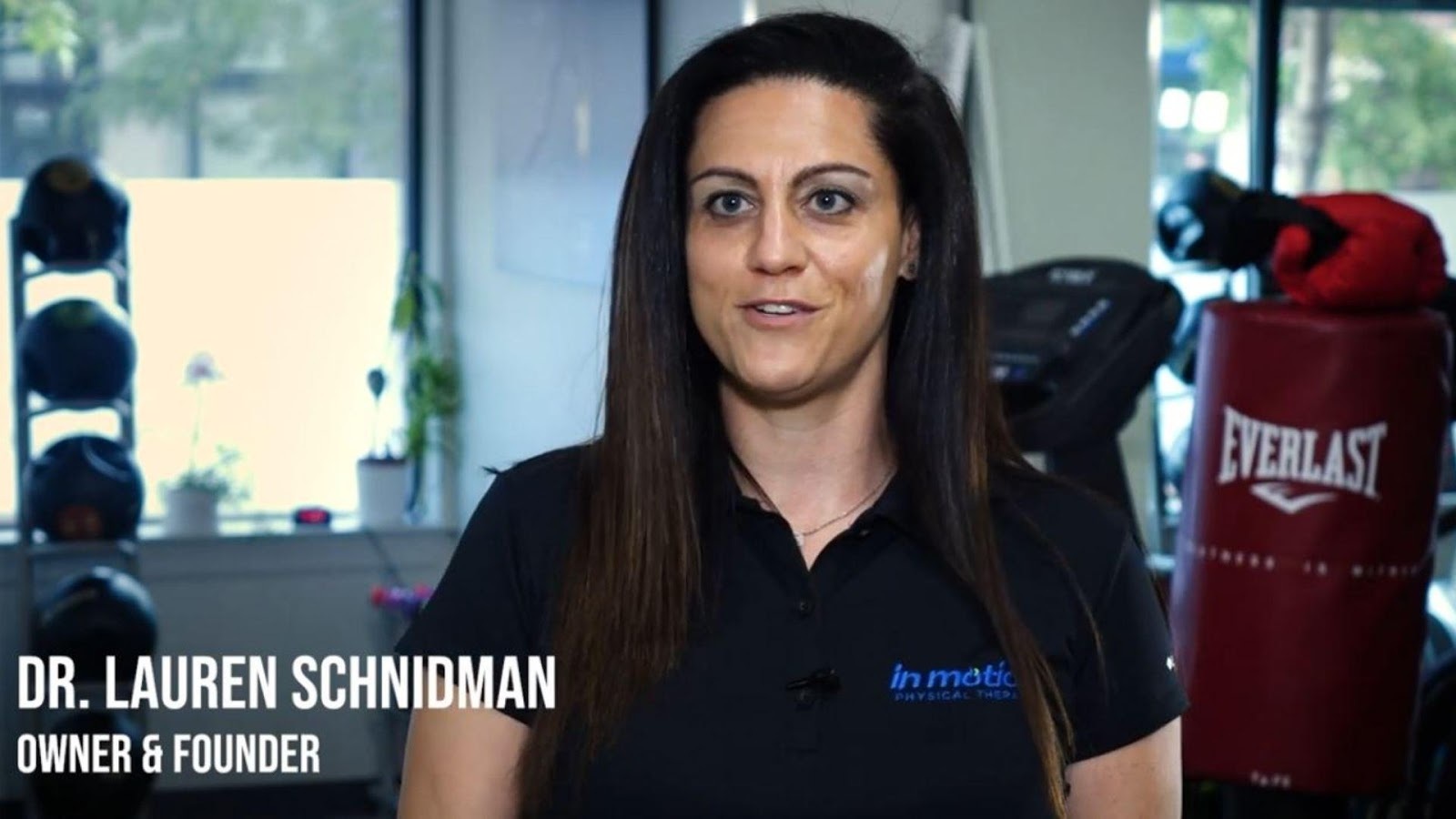
Chicago Physical Therapist Advises On Tennis Rehabilitation Practices And Tennis Injury Causes
Tennis injuries can cause more problems than a player may realize.
November 17, 2020 -- Tennis injuries can cause more problems than a player may realize.
Dr Lauren Schnidman Doctor Of Physical Therapy Chicago
Volleying a tennis ball over the net requires many more muscles in the body than it seems. The player uses arm muscles to hit the ball, back muscles to follow through, and leg muscles to carry the person back and forth for each hit.
Tennis is a complex sport that requires motor control, strength, power, skill, coordination, and technique. When one part of the player’s body is not working correctly, chances are the rest of the muscles will soon follow.
Research shows that those who play tennis recreationally sustain one and a half injuries a year. Most of these aches and pains happen in the lower part of the body.
This information means that mobility is vital in the hip and pelvic area—and to maintain it while playing tennis. Using correct motions when moving hips and having good hip strength will help decrease lower-extremity pain or injury in tennis players.
There are ways to maintain a healthy motion with tennis when playing the game or working out to keep up. The kinetic chain concept of action represents a transfer of energy from the ground to the tennis racket when the ball connects. Players who know how to hit the tennis ball with the correct momentum know to focus their strength on the arm, wrist, and racket.
When players use their legs and hips to produce power during their swings, they protect themself from the chain of injury from the low back to the shoulder and onward to the elbow.
The author of Applied Biomechanics of Tennis, Scott Miller, claims that significant leg drive in the serving process will decrease the number of injuries. This action requires the player to use their front knee at a fourteen-degree angle. When this happens, the legs will work together to deliver 51 to 55% of kinetic energy, which takes away the shoulder and arm’s power.
The mode of power transfer will then come from the hips and is a prerequisite to spare the lower and upper body from damage. If the lower and upper half of a player’s body is not working together with the hips, it will affect the rest of their swing.
A player should start with their body low to the ground when the match begins. A lower base will allow the player to generate more explosive movement at a quicker pace. Because this position is the ideal movement to begin in, it is vital to remember that the player’s hamstrings will be shortened and that hamstring stretches are used frequently to keep them from injury.
Competitive and recreational tennis players devote a lot of time to the court, leading to many common overuse injuries.
If adding a core routine or flexibility exercises doesn’t seem to be helping your tennis game, check out In Motion PT’s tennis rehabilitation page for more info.
Common Tennis Injuries In Motion Physical Therapy Treats Are:
● Shoulder impingement and bursitis
● Rotator cuff tendonitis
● Lateral Epicondylitis (tennis elbow)
● Low back pain
● Ankle strains and sprains
● Groin or hip pain
● Knee pain
Besides, tennis players are at a higher risk for muscle imbalances and asymmetries because of the expected movement patterns during play. Upon evaluation, your physical therapist will identify these imbalances leading to faulty movement patterns and injury.
A neuromuscular retraining program (a program that helps retrain the proper muscles to fire at the right time) will be initiated as you progress.
At In Motion Physical Therapy, your Physical therapist will work with you during treatment to decrease the pain associated with your tennis injury and restore your mobility and function to get you back on the court as quickly as possible.
About Dr Lauren Schnidman
Dr Lauren Schnidman is the founder of In Motion Physical Therapy, she is a highly qualified physical therapist operating out of Lincoln Park Chicago, Dr. Schnidman has a B.A. in Psychology and Biology from Washington University in Saint Louis. She qualifies as a doctor of physical therapy at the Wheeling Jesuit University.
Dr Schnidman has a wealth of accreditations and personal training credentials from organizations such as The National Academy of Sports Medicine, she is also a certified personal trainer, corrective exercise specialist, senior fitness specialist and a fitness nutrition specialist.
Specializing in tennis injury rehabilitation Dr Schnidman is also a certified tennis performance specialist.
You can contact Dr Schnidman at:
In Motion Physical Therapy
2731 N Lincoln Ave, Chicago, IL 60614
Phone: 773-236-2256
Or you can visit the Chicago Physical Therapy Website
